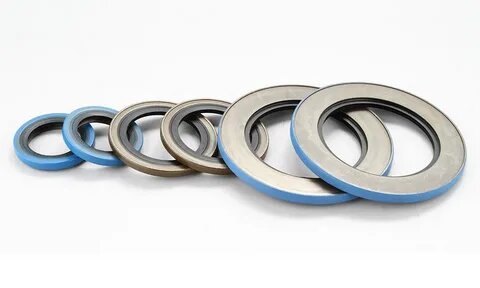Replacing a critical part can be hard, especially if you do not know how the machine worked before. Thanks to their design, size, and material, it is easy to tell if an oil seal is there. As there are many different types of oil seals on the market, this guide will cover the four most common types. Usually, they come with either a single or a double lip, in either Nitrile or Viton Rubber.
Choosing the Right Oil Seal
When you choose the oil seals for your next project, there are many important things to protect your equipment from short-term and long-term damage.
Here are the four most common types of oil seals
1. Pressure
Many oil seals can only be used in low-pressure situations, so knowing the compression set of your parts is very important.
2. Temperature
People need to know what rather pressure their oil seal will be under to choose one that can handle the heat or cold. PTFE is the best material when a machine is used in extreme weather or other conditions.
3. Fluid Types
Different oil seals can deal with oil, fuel, grease, water, etc. Knowing what kind of fluid the rotary shaft seal will be in contact with will help keep the seal and other parts working for a long time.
The amount of lubricant you need always works better when lubricated. You should choose a leather or PTFE seal for these situations because both can work with less lubrication than different types of seals.
4. Identifying Oil Seal Design
1. Type A - Rubber Covered Lip Seals
The outer diameter is usually wholly covered for excellent sealing, This oil seal is made of rubber and is the most common. This means that it can withstand many temperature changes and different chemical resistance.
2. Type B - Outer Diameter Metal Oil Seals
This is a cheap metal outer diameter for standard applications. This inexpensive oil seal lets some of the metal show on one side. This makes it easier for the oil seal to fit into the housing or bore. Because of this, it can only be used to keep thin liquids or gases from getting in.
3. Type C - Reinforced Metal Insert Oil Seals
This type of oil seal has a more robust metal insert than normal. It is similar to type B, but with an extra inner case for increased structural strength. Oil seal manufacturers understand how these seals work while using this seal.
4. Type F - Stainless Steel Garter Spring
Type F is the same as type A, but it has a corrosion-resistant metal case and a stainless-steel garter spring. This equipment can work with a wide variety of fuels and substances.
Finally, part codes follow the same pattern as the O-rings. They have the same inner diameter, outer diameter, and height as our other parts. This is not how the industry usually does things. Oil seal manufacturers in India ensure the oil seals have an outer diameter, an inner diameter, and a height.

Comments
Post a Comment